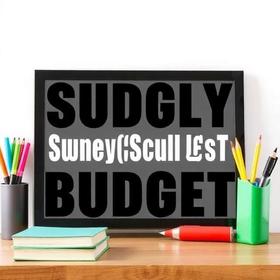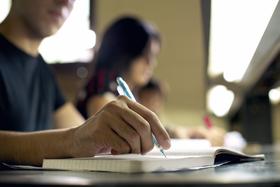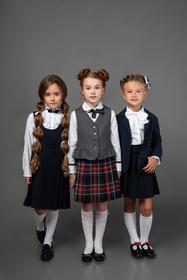Serving 1,273 students in grades 6-8, Junior High School 217 Robert A Van Wyck ranks in the bottom 50% of all schools in New York for overall test scores (math proficiency is bottom 50%, and reading proficiency is bottom 50%).
The percentage of students achieving proficiency in math is 28% (which is lower than the New York state average of 52%). The percentage of students achieving proficiency in reading/language arts is 49% (which is equal to the New York state average of 49%).
The student-teacher ratio of 14:1 is higher than the New York state level of 11:1.
Minority enrollment is 96% of the student body (majority Hispanic), which is higher than the New York state average of 60% (majority Hispanic and Black).
Quick Facts (2025-26)
- School Type: Magnet School
- Grades: 6-8
- Enrollment: 1,273 students
- Student-Teacher Ratio: 14:1
- Minority Enrollment: 96%
- Overall Testing Rank: Bottom 50% in NY
- Math Proficiency: 28% (Btm 50%)
- Reading Proficiency: 49% (Top 50%)
- Science Proficiency: 47% (Btm 50%)
- Source: National Center for Education Statistics (NCES), NY Dept. of Education
Top Rankings
Junior High School 217 Robert A Van Wyck ranks among the top 20% of public schools in New York for:
Category
Attribute
Diversity
School Overview
Junior High School 217 Robert A Van Wyck's student population of 1,273 students has declined by 23% over five school years.
The teacher population of 88 teachers has declined by 12% over five school years.
School Type
Grades Offered
Grades 6-8
(Supplemental Virtual)
(Supplemental Virtual)
Total Students
1,273 students
Gender %
Total Classroom Teachers
88 teachers
School Motto
Together with families, we will learn to find our voices, solve problems, and improve communities.
School Rankings
Junior High School 217 Robert A Van Wyck ranks within the bottom 50% of all 4,346 schools in New York (based off of combined math and reading proficiency testing data).
The diversity score of Junior High School 217 Robert A Van Wyck is 0.65, which is less than the diversity score at state average of 0.72. The school's diversity has stayed relatively flat over five school years.
Overall Testing Rank
#2995 out of 4346 schools
(Bottom 50%)
(Bottom 50%)
Math Test Scores (% Proficient)
28%
52%
Reading/Language Arts Test Scores (% Proficient)
49%
49%
Science Test Scores (% Proficient)
47%
78%
Student-Teacher Ratio
14:1
11:1
American Indian
4%
1%
Asian
25%
10%
Hispanic
52%
30%
Black
13%
16%
White
4%
40%
Hawaiian
1%
n/a
Two or more races
1%
3%
All Ethnic Groups
Participates in the National School Lunch Program (NSLP)
Yes
Eligible for Free Lunch
83%
54%
Eligible for Reduced Lunch
2%
3%
School Statewide Testing
School District Name
Source: National Center for Education Statistics (NCES), NY Dept. of Education
Profile last updated: 02/09/2025
Frequently Asked Questions
What is Junior High School 217 Robert A Van Wyck's ranking?
Junior High School 217 Robert A Van Wyck is ranked #2995 out of 4,346 schools, which ranks it among the bottom 50% of public schools in New York.
What schools are Junior High School 217 Robert A Van Wyck often compared to?
Junior High School 217 Robert A Van Wyckis often viewed alongside schools like Middle School 358, York Early College Academy, Queens Gateway To Health Sciences Secondary School by visitors of our site.
What percent of students have achieved state testing proficiency in math and reading?
28% of students have achieved math proficiency (compared to the 52% NY state average), while 49% of students have achieved reading proficiency (compared to the 49% NY state average).
How many students attend Junior High School 217 Robert A Van Wyck?
1,273 students attend Junior High School 217 Robert A Van Wyck.
What is the racial composition of the student body?
52% of Junior High School 217 Robert A Van Wyck students are Hispanic, 25% of students are Asian, 13% of students are Black, 4% of students are American Indian, 4% of students are White, 1% of students are Hawaiian, and 1% of students are Two or more races.
What is the student-teacher ratio of Junior High School 217 Robert A Van Wyck?
Junior High School 217 Robert A Van Wyck has a student ration of 14:1, which is higher than the New York state average of 11:1.
What grades does Junior High School 217 Robert A Van Wyck offer ?
Junior High School 217 Robert A Van Wyck offers enrollment in grades 6-8 (Supplemental Virtual).
What school district is Junior High School 217 Robert A Van Wyck part of?
Junior High School 217 Robert A Van Wyck is part of New York City Geographic District #28.
School Reviews
4 10/10/2025
a wonderful diversity of courses given, multi-ethnic-- good for learning about other nationalities.
5 10/10/2025
I totally rec amend this school is the best.i only had a chance to stay a year because i had to go to another school.But usually i loved this place because they had good education but rather than that i had a lot of friends and the teachers don't have bad attitudes compare to other schools where you get screamed at for a minor thing. The parents who did a bad review on this school are wrong,how do they know that their children are the ones not paying attention and not trying the hardest in school.i give this school a 50000000000 out of 50000000000.GO VAN WYKE.
Review Junior High School 217 Robert A Van Wyck. Reviews should be a few sentences in length. Please include any comments on:
- Quality of academic programs, teachers, and facilities
- Availability of music, art, sports and other extracurricular activities
Recent Articles

Public School Open House & Enrollment Season Guide
A parent-focused guide to the public school open house and enrollment season, with expert questions, timelines, and decision tips.

School Supply Budget 2026: Fees, Books, Tech Costs
School Supply Budget 2026 guide for parents, covering fees, textbooks, technology, and hidden extras to plan ahead.

Education Funding in America (2025 Update)
Comprehensive 2025 update on public school funding in America, new federal and state policies, per-pupil spending, and equity challenges.





